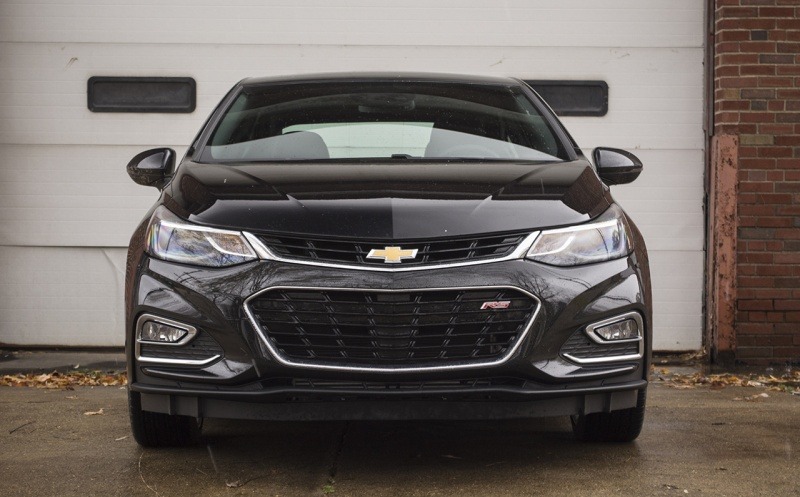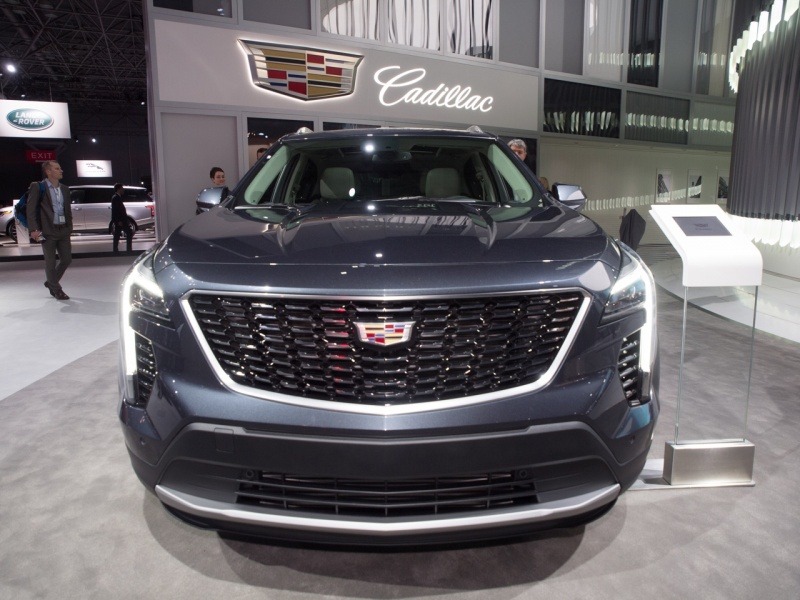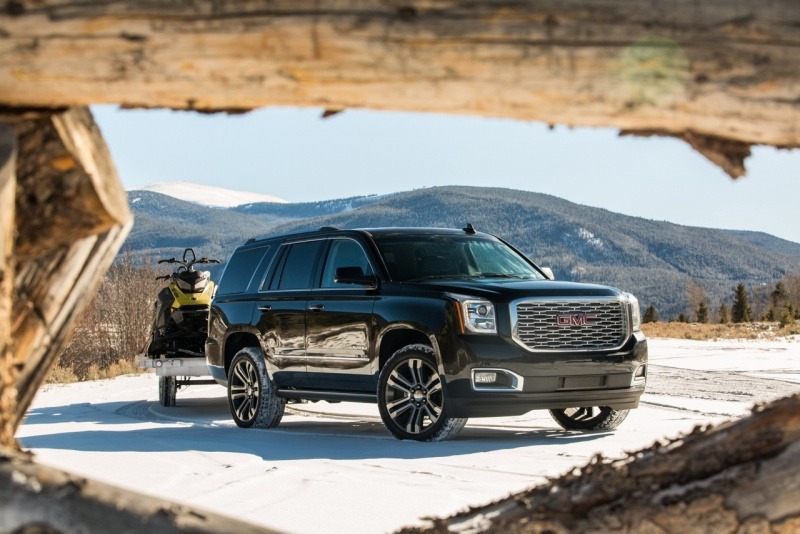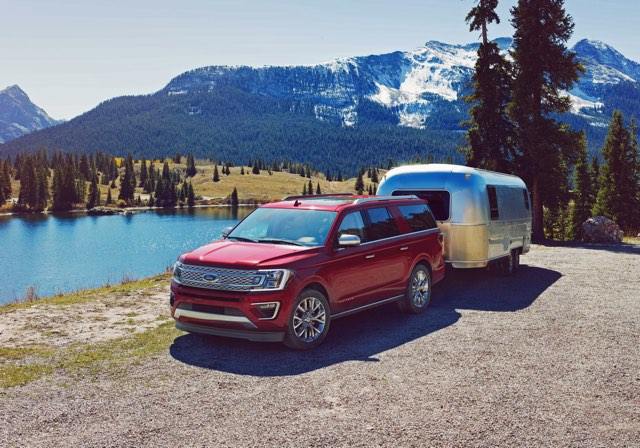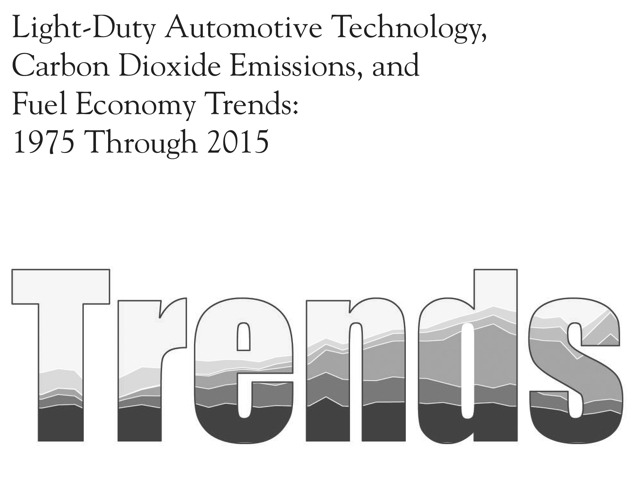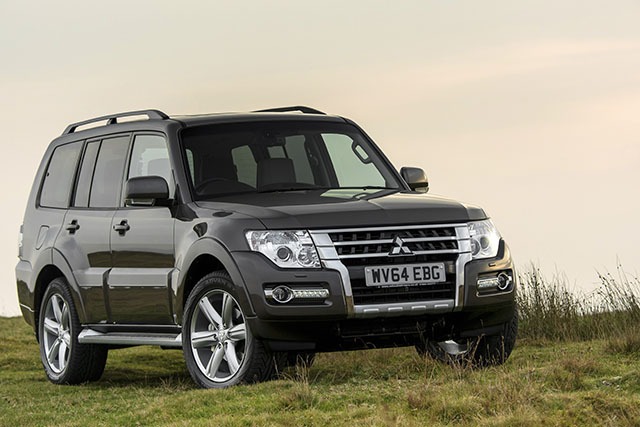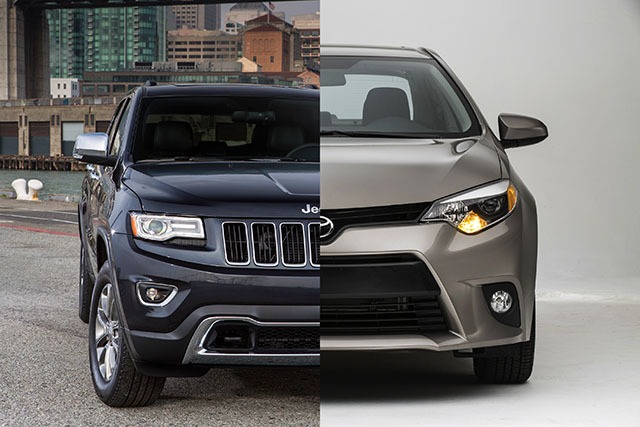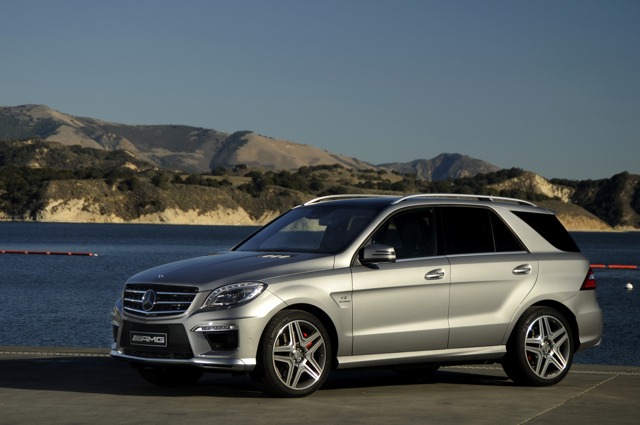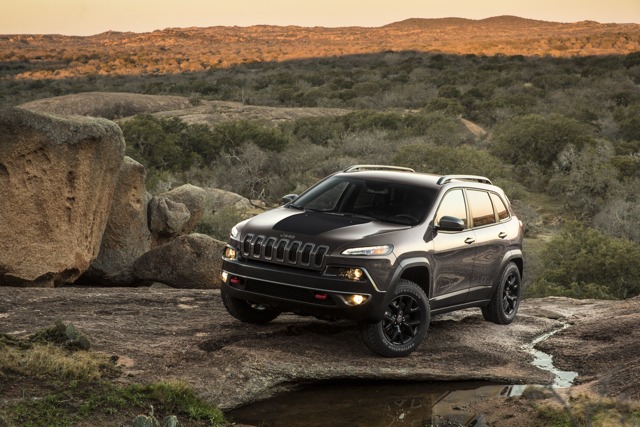Search the Community
Showing results for tags 'suvs'.
-
With more people trending towards trucks and utility vehicles, it would be expected that prices on cars would be falling. But not on used cars according to Edmunds. In their latest Used Car Report, Edmunds says the average price for a used subcompact rose 3 percent in the first quarter. Compacts saw their average price increase by 3.9 percent. The reason according to the report is due to the increasing cost for a gallon of gas. "Used-car shoppers are typically more price-sensitive to changes in the market, but this is the first time in years that we're seeing renewed demand for smaller vehicles With rising fuel costs breathing fresh air into this segment, subcompact and compact cars are finally retaining value again," said Ivan Drury, senior manager of industry analysis at Edmunds. With rising gas prices, the expectation would be that prices on used trucks and utility vehicles would drop. But Edmunds says prices for these models are holding steady as buyers are willing to pay a bit more at the pump as they place "value on increased cargo capacity, ride height, and other SUV and truck features". Source: Edmunds View full article
-

Prices of Used Subcompact and Compact Vehicles Are Rising
William Maley posted an article in Automotive Industry
With more people trending towards trucks and utility vehicles, it would be expected that prices on cars would be falling. But not on used cars according to Edmunds. In their latest Used Car Report, Edmunds says the average price for a used subcompact rose 3 percent in the first quarter. Compacts saw their average price increase by 3.9 percent. The reason according to the report is due to the increasing cost for a gallon of gas. "Used-car shoppers are typically more price-sensitive to changes in the market, but this is the first time in years that we're seeing renewed demand for smaller vehicles With rising fuel costs breathing fresh air into this segment, subcompact and compact cars are finally retaining value again," said Ivan Drury, senior manager of industry analysis at Edmunds. With rising gas prices, the expectation would be that prices on used trucks and utility vehicles would drop. But Edmunds says prices for these models are holding steady as buyers are willing to pay a bit more at the pump as they place "value on increased cargo capacity, ride height, and other SUV and truck features". Source: Edmunds -
It is no secret that buyers are gobbling up SUVs and crossovers, nor is it that automakers are introducing new and redesigned models. Take a look at the New York Auto Show this week where a number a new models (Toyota RAV4 and Subaru Forester) and concepts (Lincoln Aviator) made their debut. According to automotive consultancy firm LMC Automotive, there are currently 63 mainstream crossover and SUV models, and 53 luxury models. By 2023, LMC is projecting 90 models for both mainstream and luxury. But this prompts a question - how much is too much? “I think everyone has read the same tea leaves - right now there seems to be insatiable demand,” said Cadillac president Johan de Nysschen to Reuters. “Everyone is going into these segments with compelling new entries and that means there are going to be winners and there are going to be losers.” Already, there are signs this boom could be heading downward. LMC Automotive is forecasting a slow growth for SUVs and crossovers in 2018 and continuing through 2025. “There are still some legs left to grow in the SUV market, but growth is slowing and will eventually level off. This is a bright spot in the market, which is why everyone is flocking to it with new product,” said Jeff Schuster, LMC’s senior vice president of forecasting. A key reason comes down to the large number of SUV and crossovers that will be going off-lease and entering the market, proving a less expensive option for buyers. Cox Automotive forecasts that 40 percent of the roughly 4 million nearly new vehicles expected to come off lease this year will be SUVs and crossovers. The number is expected to rise to 44 percent. “Now that you’re seeing more SUVs starting to come off lease, that will automatically put pressure on new SUV pricing,” said Karl Brauer, executive publisher forKelley Blue Book. There are those who don't buy this argument though. Sam Fiorani, vice president of global vehicle forecasting with AutoForecast Solutions says there is still room to grow if automakers dive into different niches such as sporty models and limited editions. “The market is not yet saturated and there are all kinds of niches that have yet to be filled. We’re five or 10 years from even thinking about market saturation.” Various automakers claim there is always more room for products, provided they can stand out. “There are clearly a lot of entrants, but we are going to differentiate ourselves with a completely different look to our brand," said Lincoln president Joy Falotico at the New York Auto Show. But Karl Brauer points out a simple fact: “Simple math suggests that you’ll have more models with lower volume.” “You can’t have that many SUVs on the market and have all of them grow volume. Some of them are going to have to give,” explained Brauer. Source: Reuters View full article
- 17 replies
-
- crossovers
- flood
-
(and 2 more)
Tagged with:
-

Automakers Plan to Flood the Market with SUVs and Crossovers
William Maley posted an article in Automotive Industry
It is no secret that buyers are gobbling up SUVs and crossovers, nor is it that automakers are introducing new and redesigned models. Take a look at the New York Auto Show this week where a number a new models (Toyota RAV4 and Subaru Forester) and concepts (Lincoln Aviator) made their debut. According to automotive consultancy firm LMC Automotive, there are currently 63 mainstream crossover and SUV models, and 53 luxury models. By 2023, LMC is projecting 90 models for both mainstream and luxury. But this prompts a question - how much is too much? “I think everyone has read the same tea leaves - right now there seems to be insatiable demand,” said Cadillac president Johan de Nysschen to Reuters. “Everyone is going into these segments with compelling new entries and that means there are going to be winners and there are going to be losers.” Already, there are signs this boom could be heading downward. LMC Automotive is forecasting a slow growth for SUVs and crossovers in 2018 and continuing through 2025. “There are still some legs left to grow in the SUV market, but growth is slowing and will eventually level off. This is a bright spot in the market, which is why everyone is flocking to it with new product,” said Jeff Schuster, LMC’s senior vice president of forecasting. A key reason comes down to the large number of SUV and crossovers that will be going off-lease and entering the market, proving a less expensive option for buyers. Cox Automotive forecasts that 40 percent of the roughly 4 million nearly new vehicles expected to come off lease this year will be SUVs and crossovers. The number is expected to rise to 44 percent. “Now that you’re seeing more SUVs starting to come off lease, that will automatically put pressure on new SUV pricing,” said Karl Brauer, executive publisher forKelley Blue Book. There are those who don't buy this argument though. Sam Fiorani, vice president of global vehicle forecasting with AutoForecast Solutions says there is still room to grow if automakers dive into different niches such as sporty models and limited editions. “The market is not yet saturated and there are all kinds of niches that have yet to be filled. We’re five or 10 years from even thinking about market saturation.” Various automakers claim there is always more room for products, provided they can stand out. “There are clearly a lot of entrants, but we are going to differentiate ourselves with a completely different look to our brand," said Lincoln president Joy Falotico at the New York Auto Show. But Karl Brauer points out a simple fact: “Simple math suggests that you’ll have more models with lower volume.” “You can’t have that many SUVs on the market and have all of them grow volume. Some of them are going to have to give,” explained Brauer. Source: Reuters- 17 comments
-
- crossovers
- flood
-
(and 2 more)
Tagged with:
-
If you have been following auto sales for the past few years, then you know that SUVs and trucks currently dominate the sales charts partly due to the low gas prices. This is especially true when it comes to the luxury segment, where utility models are eating sedans. But a new report from The New York Times reveals that American automakers are eating the lunches of luxury car manufacturers. According to data from Edmunds, the likes of Ford, Chevrolet, and GMC have seen their share of domestic sales of models with an average price of $60,000 steadily climbing, while luxury brands like Mercedes-Benz, Porsche, and Lexus have been declining. GMC, in particular, has shown the largest growth, accounting 11.3 percent of domestic sales of $60,000-plus models in 2017. Five years ago, the brand only made up 0.1 percent of those sales. A lot of this credit can be laid at the feet of GMC's Denali brands. At a recent investor conference, GM showed data that the Denali line had an average sale price of $56,000 - more than the average price of an Audi, BMW, or Mercedes-Benz. “This thing is a money machine,” said GM's president Dan Ammann about Denali. Over at Ford, more than half of F-150 sales are made up by the Lariat, King Ranch, Raptor models. Only a few years ago, those models made up a third. Why are American automakers seeing a massive increase in expensive SUVs and trucks? Part of it comes down to price, but there is also the image. “We’ve been taking in Lexuses on trade-ins, BMWs," said Gary Gilchrist, owner of a GMC dealer in Tacoma, Washington. “People used to want German cars for the image factor. Now, if you have a Denali, you get that. People turn their heads to look.” Source: New York Times View full article
- 67 replies
-
- american automakers
- features
-
(and 4 more)
Tagged with:
-

More Luxury Car Buyers Are Moving to Trucks and SUVs
William Maley posted an article in Automotive Industry
If you have been following auto sales for the past few years, then you know that SUVs and trucks currently dominate the sales charts partly due to the low gas prices. This is especially true when it comes to the luxury segment, where utility models are eating sedans. But a new report from The New York Times reveals that American automakers are eating the lunches of luxury car manufacturers. According to data from Edmunds, the likes of Ford, Chevrolet, and GMC have seen their share of domestic sales of models with an average price of $60,000 steadily climbing, while luxury brands like Mercedes-Benz, Porsche, and Lexus have been declining. GMC, in particular, has shown the largest growth, accounting 11.3 percent of domestic sales of $60,000-plus models in 2017. Five years ago, the brand only made up 0.1 percent of those sales. A lot of this credit can be laid at the feet of GMC's Denali brands. At a recent investor conference, GM showed data that the Denali line had an average sale price of $56,000 - more than the average price of an Audi, BMW, or Mercedes-Benz. “This thing is a money machine,” said GM's president Dan Ammann about Denali. Over at Ford, more than half of F-150 sales are made up by the Lariat, King Ranch, Raptor models. Only a few years ago, those models made up a third. Why are American automakers seeing a massive increase in expensive SUVs and trucks? Part of it comes down to price, but there is also the image. “We’ve been taking in Lexuses on trade-ins, BMWs," said Gary Gilchrist, owner of a GMC dealer in Tacoma, Washington. “People used to want German cars for the image factor. Now, if you have a Denali, you get that. People turn their heads to look.” Source: New York Times- 67 comments
-
- american automakers
- features
-
(and 4 more)
Tagged with:
-

Millennials Are Buying Cars Due To A Baby Boom
William Maley posted an article in Automotive Industry
The past few years have been tiring if you happen to be a millennial. There has been countless articles talking about how this group are not buying houses or vehicles. Of course, the reason is that millennials don't have the money (saddled with more debt, having entry-level salaries, etc). But that is changing. According to a report from Bloomberg, millennials are beginning to head out to the suburbs, and purchasing houses and cars. The reason? They're having their baby boom. According to data from the Zillow Group, Americans aged from 18 to 34 have become the largest group of home buyers, with almost half living in the suburbs. They're upsizing their vehicles as well to go with their new home. Large SUV sales jumped 11 percent in first half of this year according to Ford Motor Co. Midsize SUVs rose 9 percent and small SUVs jumped 4 percent in the same timeframe. “We do see that demographic group driving larger sport utility sales as they acquire homes, create families and gain some wealth,” said Michelle Krebs, an analyst at car-shopping website Autotrader. “They started with compact sport utilities and now, with families, they’re moving up.” Expect more millennials to follow suit. LMC Automotive estimates that sales of large SUVs will rise 25 percent between now and 2025. “There’s no question people are waiting longer, but people still want to have children. As long as people have children and those children grow and acquire friendships, it requires more space,” said Erich Merkle, Ford’s U.S. sales analyst. Currently, the largest group of buyers for midsize and large SUVs are Gen Xers, but millennials are expected to eclipse them due to there being a large number of them - about 80 million. “There’s going to be an extra 25 million people passing into and through the 35- to 44-year-old demographic over the next 10 to 15 years,” Merkle said. “That’s going to lead to a gradual increase in the growth of large and midsize SUVs that’s already starting to happen.” Source: Bloomberg -
The past few years have been tiring if you happen to be a millennial. There has been countless articles talking about how this group are not buying houses or vehicles. Of course, the reason is that millennials don't have the money (saddled with more debt, having entry-level salaries, etc). But that is changing. According to a report from Bloomberg, millennials are beginning to head out to the suburbs, and purchasing houses and cars. The reason? They're having their baby boom. According to data from the Zillow Group, Americans aged from 18 to 34 have become the largest group of home buyers, with almost half living in the suburbs. They're upsizing their vehicles as well to go with their new home. Large SUV sales jumped 11 percent in first half of this year according to Ford Motor Co. Midsize SUVs rose 9 percent and small SUVs jumped 4 percent in the same timeframe. “We do see that demographic group driving larger sport utility sales as they acquire homes, create families and gain some wealth,” said Michelle Krebs, an analyst at car-shopping website Autotrader. “They started with compact sport utilities and now, with families, they’re moving up.” Expect more millennials to follow suit. LMC Automotive estimates that sales of large SUVs will rise 25 percent between now and 2025. “There’s no question people are waiting longer, but people still want to have children. As long as people have children and those children grow and acquire friendships, it requires more space,” said Erich Merkle, Ford’s U.S. sales analyst. Currently, the largest group of buyers for midsize and large SUVs are Gen Xers, but millennials are expected to eclipse them due to there being a large number of them - about 80 million. “There’s going to be an extra 25 million people passing into and through the 35- to 44-year-old demographic over the next 10 to 15 years,” Merkle said. “That’s going to lead to a gradual increase in the growth of large and midsize SUVs that’s already starting to happen.” Source: Bloomberg View full article
-
Fiat Chrysler Automobiles will produce no more passenger cars in the U.S. early next year. The Dodge Dart will end production in September, while production of the Chrysler 200 will cease in December. This is to make way for more production of SUVs and trucks - Jeep Cherokee at Belvidere, Illinois and Sterling Heights, MI for the next-gen Ram 1500. "By the time we finish with this, hopefully, all of our production assets in the United States — if you exclude Canada and Mexico from the fold — all those U.S. plants will be producing either Jeeps or Ram," said FCA CEO Sergio Marchionne during a call with analysts yesterday. Why would FCA end passenger car production in the U.S.? Profit margins. The Detroit Free Press reports this is part of Marchionne's multibillion-dollar plan to match the profit margins seen at Ford and General Motors. Part of the plan involves taking advantage of the popularity of crossovers, SUVs, and trucks in the U.S.; low gas prices, and the lower costs of producing passenger cars in Mexico. "When you look at the economics of car manufacturing ...the margins that we were getting from our experience of both the Dart and the Chrysler 200 ...yielded returns that would not, on a competitive basis, match even anything close or remotely close to what we could derive from utilization of those assets in the Jeep or Ram world. So we have made that shift," Marchionne said. Despite FCA ending production of both the Dart and 200, Marchionne said he is still looking for a partner to build these vehicles. “I think we have made progress. We’re not in a position to announce anything." But would any automaker be willing to take up FCA's offer? "Who would want to commit to that capacity in their own plant when they didn't sell well when they were new?" said Dave Sullivan, an analyst with AutoPacific to Automotive News. "No one wants to build sedans when their own capacity is at a premium and they can't build enough crossovers to satisfy demand." Source: Detroit Free Press, Automotive News (Subscription Required) View full article
- 23 replies
-
- Chrysler 200
- Dodge Dart
-
(and 3 more)
Tagged with:
-
Fiat Chrysler Automobiles will produce no more passenger cars in the U.S. early next year. The Dodge Dart will end production in September, while production of the Chrysler 200 will cease in December. This is to make way for more production of SUVs and trucks - Jeep Cherokee at Belvidere, Illinois and Sterling Heights, MI for the next-gen Ram 1500. "By the time we finish with this, hopefully, all of our production assets in the United States — if you exclude Canada and Mexico from the fold — all those U.S. plants will be producing either Jeeps or Ram," said FCA CEO Sergio Marchionne during a call with analysts yesterday. Why would FCA end passenger car production in the U.S.? Profit margins. The Detroit Free Press reports this is part of Marchionne's multibillion-dollar plan to match the profit margins seen at Ford and General Motors. Part of the plan involves taking advantage of the popularity of crossovers, SUVs, and trucks in the U.S.; low gas prices, and the lower costs of producing passenger cars in Mexico. "When you look at the economics of car manufacturing ...the margins that we were getting from our experience of both the Dart and the Chrysler 200 ...yielded returns that would not, on a competitive basis, match even anything close or remotely close to what we could derive from utilization of those assets in the Jeep or Ram world. So we have made that shift," Marchionne said. Despite FCA ending production of both the Dart and 200, Marchionne said he is still looking for a partner to build these vehicles. “I think we have made progress. We’re not in a position to announce anything." But would any automaker be willing to take up FCA's offer? "Who would want to commit to that capacity in their own plant when they didn't sell well when they were new?" said Dave Sullivan, an analyst with AutoPacific to Automotive News. "No one wants to build sedans when their own capacity is at a premium and they can't build enough crossovers to satisfy demand." Source: Detroit Free Press, Automotive News (Subscription Required)
- 23 comments
-
- Chrysler 200
- Dodge Dart
-
(and 3 more)
Tagged with:
-
The EPA released their annual report on the trends of emissions and fuel economy for light vehicles and the results are a bit mixed. The average fuel economy of new cars and trucks came to 24.3 mpg for 2014. This was the same fuel economy average for 2013, when the average increased by 0.6 mpg. 2014 was the first year since 2011 where fleet-wide fuel economy didn't increase. Why no increase? The EPA says growing demand for crossovers, SUVs, and trucks along with lower gas prices offset the fleet-wide efficiency gains. Christopher Grundler, director of the EPA’s Office of Transportation and Air Quality tells Automotive News that he's not worried about the slowdown in fleet-wide mpg improvements. “The whole policy was designed explicitly to preserve consumer choice. In 2014, the mix shifted a little bit, but overall we are exactly where we expected to be with greenhouse gas reductions,” said Grundler. There was some good news from the report. The average carbon dioxide emissions from new vehicles were 13 grams per mile lower than 2014 targets. Also, the average fuel economy for trucks climbed 0.6 mpg to 20.4. The EPA says that 0.6 mpg increase in the second-highest gain in 30 years. Source: Automotive News (Subscription Required), EPA View full article
- 5 replies
-
- Crossovers
- EPA
-
(and 6 more)
Tagged with:
-
The EPA released their annual report on the trends of emissions and fuel economy for light vehicles and the results are a bit mixed. The average fuel economy of new cars and trucks came to 24.3 mpg for 2014. This was the same fuel economy average for 2013, when the average increased by 0.6 mpg. 2014 was the first year since 2011 where fleet-wide fuel economy didn't increase. Why no increase? The EPA says growing demand for crossovers, SUVs, and trucks along with lower gas prices offset the fleet-wide efficiency gains. Christopher Grundler, director of the EPA’s Office of Transportation and Air Quality tells Automotive News that he's not worried about the slowdown in fleet-wide mpg improvements. “The whole policy was designed explicitly to preserve consumer choice. In 2014, the mix shifted a little bit, but overall we are exactly where we expected to be with greenhouse gas reductions,” said Grundler. There was some good news from the report. The average carbon dioxide emissions from new vehicles were 13 grams per mile lower than 2014 targets. Also, the average fuel economy for trucks climbed 0.6 mpg to 20.4. The EPA says that 0.6 mpg increase in the second-highest gain in 30 years. Source: Automotive News (Subscription Required), EPA
- 5 comments
-
- Crossovers
- EPA
-
(and 6 more)
Tagged with:
-
G. David Felt Staff Writer Alternative Energy - www.CheersandGears.com Worst Used Cars Compare.com reviewed the insurance industry reports on auto's, accidents, quality reports and much more to build a 5 point list on used auto's and what NOT to buy. The break down comes as follows: 1) Trade-Ins Dealers DO NOT WANT: Mini Cooper Jaguar S-Type Land Rover Discovery Mazda CX-7 This is due to the high failure rate of the power-trains. 2) Dealers DO NOT WANT brands that are no longer made, unless they are limited production versions, but for sure they do not want the following: PT Cruiser Dodge Grand Caravan SAAB Suzuki Saturn 3) Dealers do not want cars with HIGH COST OF OWNERSHIP: Example given is 2010 Ford Focus with a cost of owner ship in first 5yrs of $27,805. 4) Dealers DO NOT WANT auto's with no title. 5) Dealers DO NOT WANT auto's with Funky smells such as: Gasoline Smell Burning Smell Sweet Smell Mildew Smell Smoke Smell So what do you think? Do you agree with this or not?
-

Mitsubishi Sticks With Off-Road Roots For Next Shogun/Montero
William Maley posted an article in Mitsubishi
The current Mitsubishi Pajero (the Montero to us) hasn't changed much since it was first introduced back in 2000 - the last major changes happened in 2006. Now we know Mitsubishi is working on a new Pajero that will be due in out a few years and coming to the U.S. We got some idea of what the model will look like with the GC-PHEV Concept shown in Tokyo and Chicago. Autocar recently spoke with Lance Bradley, head of Mitsubishi Motors UK who revealed what the intent of the next Pajero will be. Bradley explained that the Pajero will retain its off-road roots, while incorporating their plug-in hybrid tech. “A lot of the rivals are more beautiful or more refined but the Shogun needs to be an authentic off-roader: not fancy, not a school-run car but for people who tow horse boxes or actually go off-road," said Bradley “Of course, that market is limited, but look at the Discovery - there is room for vehicles with utility at their heart. The Discovery is very good but very expensive and we see an opportunity in providing a less-expensive alternative in terms of pricing and running costs, particularly with our plug-in hybrid technology.” Source: Autocar- 7 comments
-
- Future
- Mitsubishi
- (and 4 more)
-

Transaction Prices Go Up On SUVs, Slow Sales Hit Small Cars
William Maley posted an article in Automotive Industry
With gas prices making a downward trend, sales of SUVs are making an upward climb. In fact, SUVs, pickups, and crossovers when added together make up half of total volume of sales in April. Now with the increase in SUV sales, prices also went up. Edmunds reports that average transaction prices on SUVs have climbed nine percent when compared to last year. Now when something goes up, something must come down. In this case, it happens to be small cars. Edmunds says that the average timeframe to sell a small car has risen from two and half months to three. The increase in the time to sell has also caused the average transaction price to remain flat. Source: Edmunds -
With gas prices making a downward trend, sales of SUVs are making an upward climb. In fact, SUVs, pickups, and crossovers when added together make up half of total volume of sales in April. Now with the increase in SUV sales, prices also went up. Edmunds reports that average transaction prices on SUVs have climbed nine percent when compared to last year. Now when something goes up, something must come down. In this case, it happens to be small cars. Edmunds says that the average timeframe to sell a small car has risen from two and half months to three. The increase in the time to sell has also caused the average transaction price to remain flat. Source: Edmunds View full article
-
Car and Driver reports that Mercedes-Benz is planning some major changes for its nomenclature on SUV and crossovers. Sources tell the magazine that Mercedes is trying to make their SUV and crossovers fall more in line with the C, E, and S-Class models. The first model to receive a name change is the ML-Class. When the model gets refreshed next year, it will be named the GLE-Class. Then when the Concept Coupe SUV heads into production, it will wear the GLE Coupe nameplate. The GLK-Class will become the GLC-Class, and the GL-Class becomes the GLS-Class. The only model that will not see a name change is the G-Class. Source: Car and Driver View full article
- 8 replies
-
- Change
- Crossovers
-
(and 6 more)
Tagged with:
-
Car and Driver reports that Mercedes-Benz is planning some major changes for its nomenclature on SUV and crossovers. Sources tell the magazine that Mercedes is trying to make their SUV and crossovers fall more in line with the C, E, and S-Class models. The first model to receive a name change is the ML-Class. When the model gets refreshed next year, it will be named the GLE-Class. Then when the Concept Coupe SUV heads into production, it will wear the GLE Coupe nameplate. The GLK-Class will become the GLC-Class, and the GL-Class becomes the GLS-Class. The only model that will not see a name change is the G-Class. Source: Car and Driver
- 8 comments
-
- Change
- Crossovers
-
(and 6 more)
Tagged with:
-
Congratulations America. It seems we now buy more SUVs and crossovers than sedans according to a new study from IHS Automotive. Through May of 2014, IHS says that SUVs and CUVs account for 36.5 percent of new car registrations, compared to the 35.4 percent of registrations for sedans. This is a reversal from five years ago where sedans stood at 36.3 percent of registrations, compared to the 31.4 percent for SUVs and crossovers. “It’s not that sedans have become unpopular. It’s just that CUVs have really grown. They drive like cars, but they have higher positioning, the option for four-wheel drive and better fuel economy. There’s more space for seating. It’s easy to see why they’ve taken off in popularity,” said Tom Libby, analyst for IHS Automotive. The one thing we wished the study showed is the breakdown in registration percentages if SUVs and crossovers were separated. Otherwise, the results don't come as surprise. Source: Bloomberg William Maley is a staff writer for Cheers & Gears. He can be reached at [email protected] or you can follow him on twitter at @realmudmonster.
- 13 comments
-
- Crossovers
- Sales
-
(and 3 more)
Tagged with:
-
Congratulations America. It seems we now buy more SUVs and crossovers than sedans according to a new study from IHS Automotive. Through May of 2014, IHS says that SUVs and CUVs account for 36.5 percent of new car registrations, compared to the 35.4 percent of registrations for sedans. This is a reversal from five years ago where sedans stood at 36.3 percent of registrations, compared to the 31.4 percent for SUVs and crossovers. “It’s not that sedans have become unpopular. It’s just that CUVs have really grown. They drive like cars, but they have higher positioning, the option for four-wheel drive and better fuel economy. There’s more space for seating. It’s easy to see why they’ve taken off in popularity,” said Tom Libby, analyst for IHS Automotive. The one thing we wished the study showed is the breakdown in registration percentages if SUVs and crossovers were separated. Otherwise, the results don't come as surprise. Source: Bloomberg William Maley is a staff writer for Cheers & Gears. He can be reached at [email protected] or you can follow him on twitter at @realmudmonster. View full article
- 13 replies
-
- Crossovers
- Sales
-
(and 3 more)
Tagged with:


